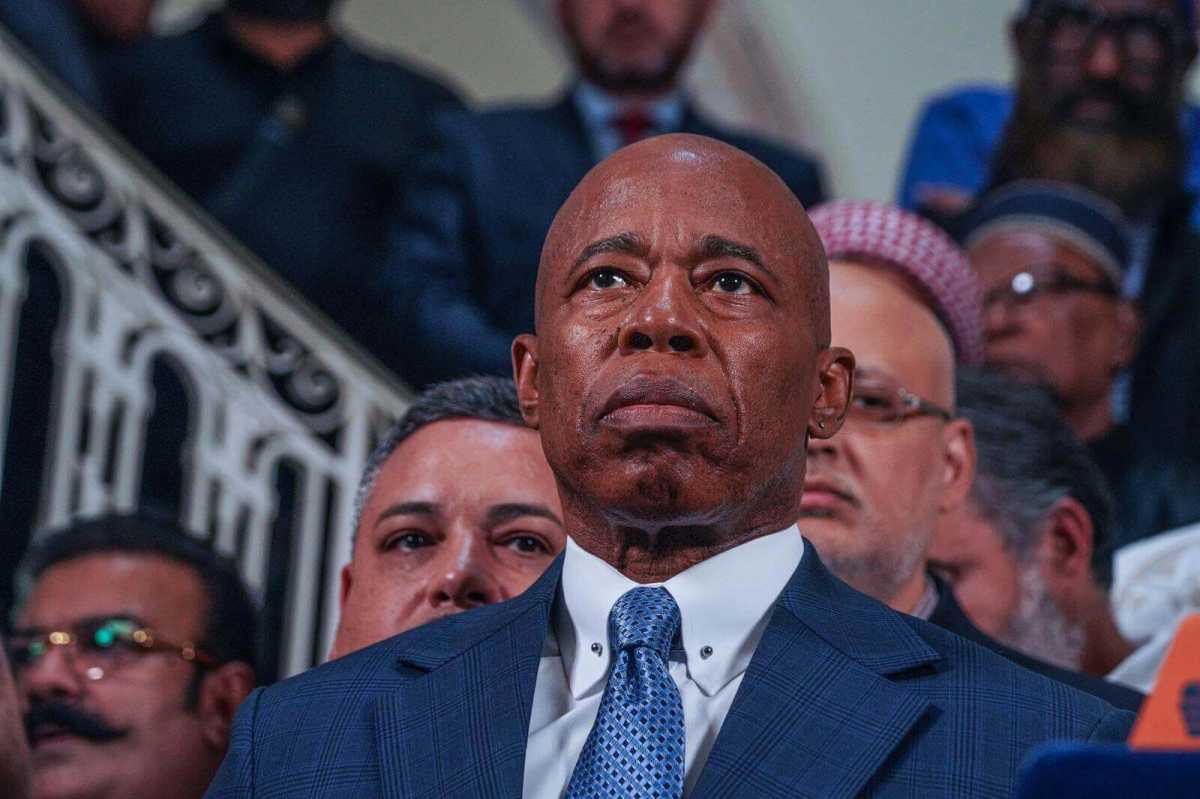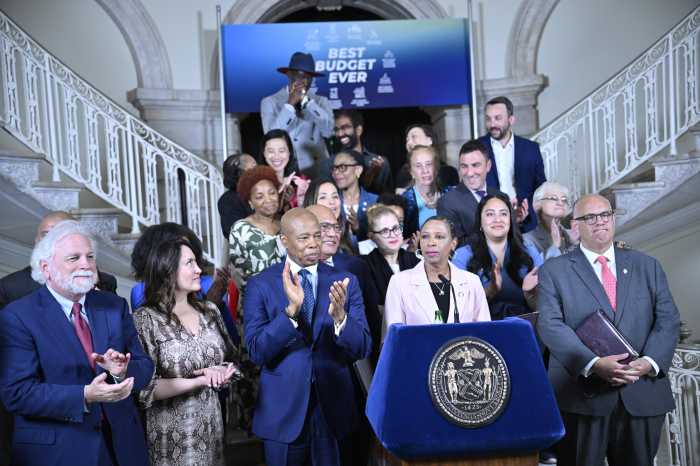The Adams Administration on Saturday directed all city agencies to once again cut their budgets by 5%, and warned that agencies could have to slash 15% of spending by next year as the migrant crisis prolongs and deepens.
The order from City Hall calls on all agencies to produce plans to reduce spending by 5% ahead of the next update to the city’s financial plan in November, as part of his “Program to Eliminate the Gap” (PEG).
“The die is not yet cast,” the mayor says, but further 5% cuts could be in the pipeline in the January preliminary budget and April executive budget absent support from the federal and state governments.
“While our compassion is limitless, our resources are not,” Hizzoner said. “If we can get the substantial support we need from our federal and state partners, we can avoid these funding reductions. We need Washington and Albany to finally do their part by paying their fair share and coming up with a decompression strategy that reduces the pressure on New York City, so we are not forced to manage this crisis almost entirely on our own.”
The cuts will seek to “minimize disruption to programs and services” and will not involve layoffs, says City Hall. The administration has recently settled contracts with unions representing cops, teachers, and other municipal workers that will see them get raises.
More than 110,000 asylum seekers have arrived in New York City since last year, with thousands still arriving each week, and the influx has strained the city’s ability to house and care for them. The mayor has said that without federal and state intervention, the migrant crisis could end up costing the city $12 billion over the next three years, limiting the Big Apple’s ability to fund other government services.
“We’re talking $12 billion. $12 billion of running our city: sanitation, police, education, libraries, everything that we have to run the city,” the mayor said on PIX 11 on Sunday.
The fiscal situation is complicated further since COVID-era federal aid will sunset next year, he says.
Adams has unsuccessfully called for the feds to grant the migrants quick authorization to work in the United States; the lack of work authorization has kept many locked out of the ability to sustain themselves, he notes, requiring continuing city support.
The mayor has been under fire this week after saying on Wednesday that the asylum-seeker crisis would “destroy New York City,” with some blasting Adams for seemingly scapegoating migrants for the city’s problems. Adams even took heat from his counterpart in Chicago, Brandon Johnson, who said he would “not accept the notion that the city of Chicago is going to be destroyed.” Adams has stuck by his remarks.
He has also called for a judge to weaken the city’s decades-old right to shelter for homeless people, arguing the policy wasn’t designed for influxes of people.
“We’re saying that you can come from anywhere on the globe, come to New York City and we are to food, house, clothe you for as long as you want, forever,” the mayor said on PIX 11. “That’s not realistic. It’s not sustainable. And that is what we’re seeing now. That needs to be reexamined.”
Gov. Kathy Hochul has declined to extend the right-to-shelter to counties outside New York City, a move the Adams administration has blasted. The right-to-shelter has been tested either way as the city’s capacity to house migrants falls apart, which was seen most vividly in July when hundreds of migrants slept on the street outside the Roosevelt Hotel, an intake center in Midtown, while waiting for a shelter spot.
Critics noted that the mayor has been slashing agency budgets in “PEG” rounds since before the migrant crisis even began.
“The Mayor’s been slashing service agencies via relentless PEG cuts since he got in,” said left-wing Queens Councilmember Tiffany Cabán. “He’s just seizing this opportunity to ramp up and blaming people fleeing war, sanctions, dictatorship & repression.”
Budget cuts have led to a staffing crisis at city agencies and left them struggling to fulfill their mandates, from processing food stamp applications to paying pre-K providers to building bus and bike lanes.
The city had a $1.69 billion budget surplus at the end of the last fiscal year in June, which was used to plug the deficit in the Fiscal Year 2024 budget, said City Comptroller Brad Lander. The budget deficit is expected to reach nearly $7 billion by Fiscal Year 2027, and by law, the city must balance its budget.
City Council Speaker Adrienne Adams said her team is “reviewing” the PEG cuts outlined by the administration and “seeking further details.”
“Tens of thousands of people seeking asylum are arriving in our city at a time when we are already confronting a housing crisis, record homelessness, and the sunset of federal COVID stimulus funds,” said Speaker Adams and Council Finance Chair Justin Brannan. “New York City cannot be expected to handle this on our own. The costs are considerable, and it is critical that the city receives more aid, while safeguarding funding that supports New Yorkers.”
Read more: Adams Defends NYC’s Response to Flash Floods







































